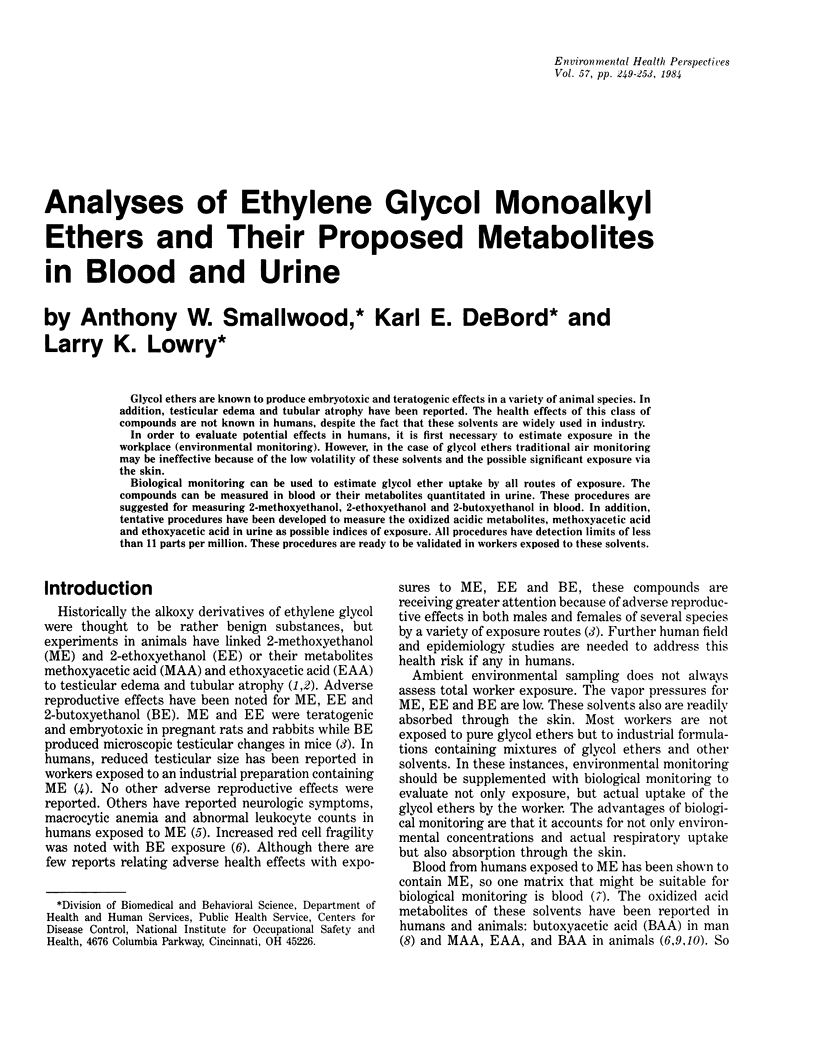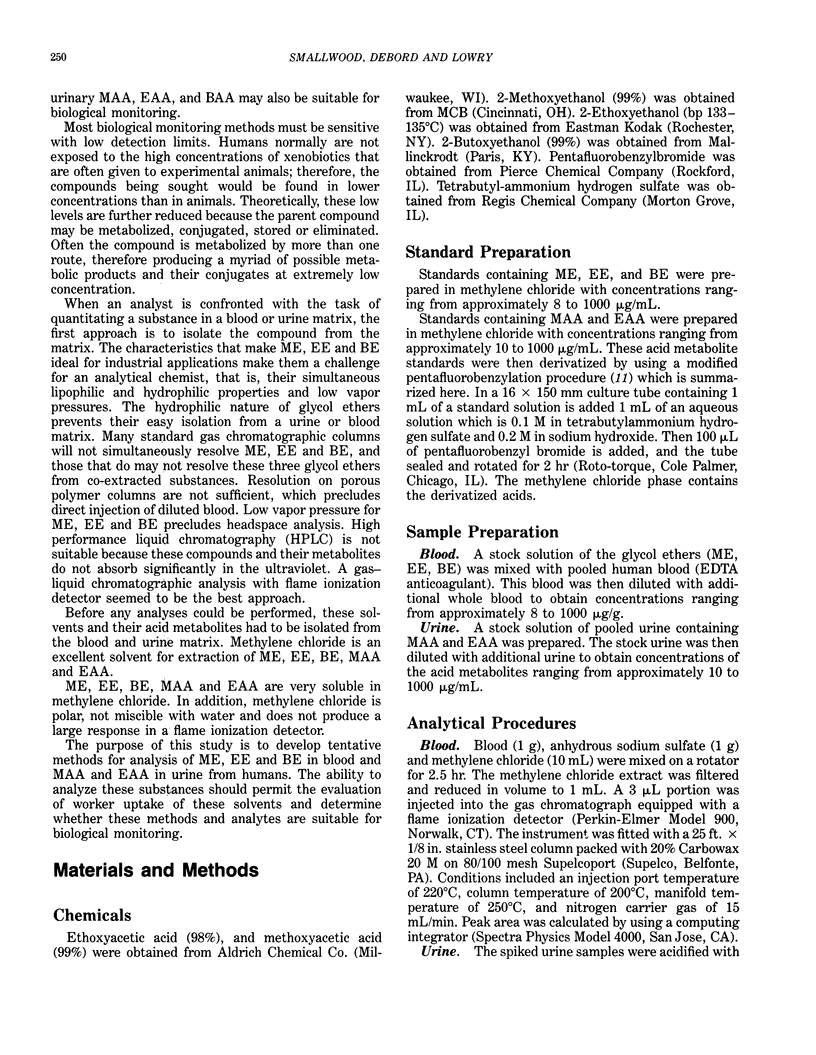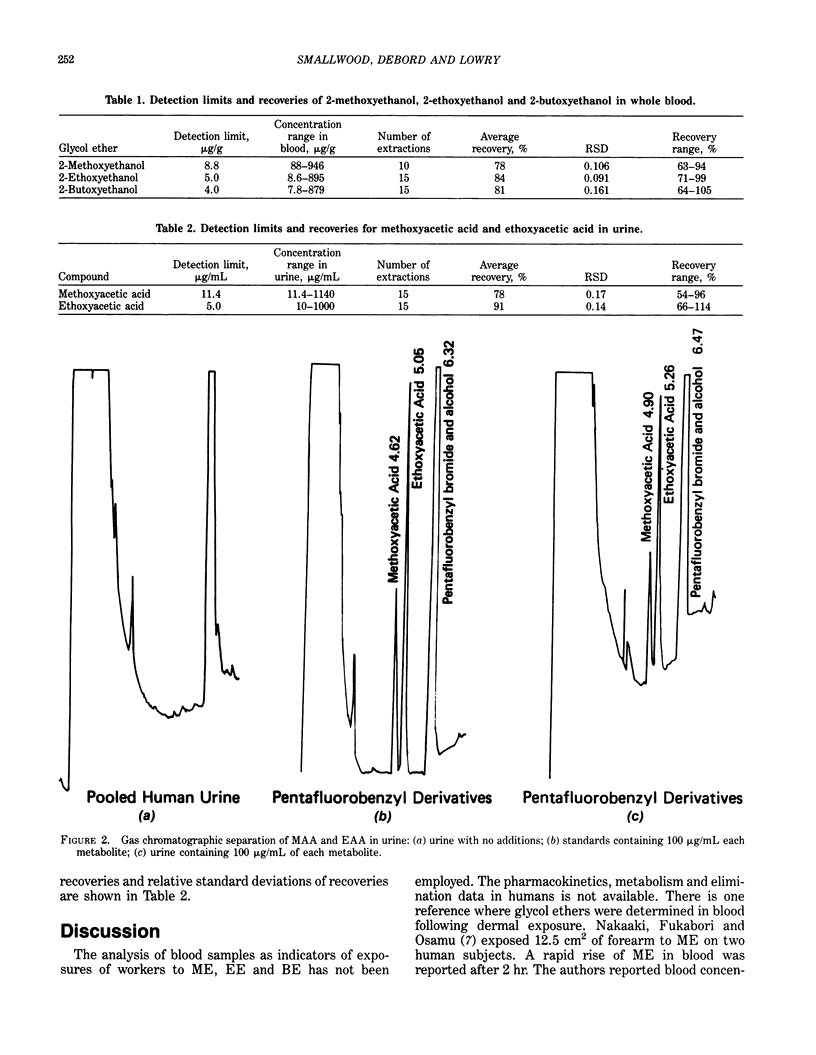Abstract
Glycol ethers are known to produce embryotoxic and teratogenic effects in a variety of animal species. In addition, testicular edema and tubular atrophy have been reported. The health effects of this class of compounds are not known in humans, despite the fact that these solvents are widely used in industry. In order to evaluate potential effects in humans, it is first necessary to estimate exposure in the workplace (environmental monitoring). However, in the case of glycol ethers traditional air monitoring may be ineffective because of the low volatility of these solvents and the possible significant exposure via the skin. Biological monitoring can be used to estimate glycol ether uptake by all routes of exposure. The compounds can be measured in blood or their metabolites quantitated in urine. These procedures are suggested for measuring 2-methoxyethanol, 2-ethoxyethanol and 2-butoxyethanol in blood. In addition, tentative procedures have been developed to measure the oxidized acidic metabolites, methoxyacetic acid and ethoxyacetic acid in urine as possible indices of exposure. All procedures have detection limits of less than 11 parts per million. These procedures are ready to be validated in workers exposed to these solvents.
Full text
PDF




Selected References
These references are in PubMed. This may not be the complete list of references from this article.
- CARPENTER C. P., KECK G. A., NAIR J. H., 3rd, POZZANI U. C., SMYTH H. F., Jr, WEIL C. S. The toxicity of butyl cellosolve solvent. AMA Arch Ind Health. 1956 Aug;14(2):114–131. [PubMed] [Google Scholar]
- Cook R. R., Bodner K. M., Kolesar R. C., Uhlmann C. S., VanPeenen P. F., Dickson G. S., Flanagan K. A cross-sectional study of ethylene glycol monomethyl ether process employees. Arch Environ Health. 1982 Nov-Dec;37(6):346–351. doi: 10.1080/00039896.1982.10667589. [DOI] [PubMed] [Google Scholar]
- Jönsson A. K., Pedersen J., Steen G. Ethoxyacetic acid and N-ethoxyacetylglycine: metabolites of ethoxyethanol (ethylcellosolve) in rats. Acta Pharmacol Toxicol (Copenh) 1982 May;50(5):358–362. doi: 10.1111/j.1600-0773.1982.tb00987.x. [DOI] [PubMed] [Google Scholar]
- Jönsson A. K., Steen G. n-Butoxyacetic acid, a urinary metabolite from inhaled n-butoxyethanol (Butylcellosolve). Acta Pharmacol Toxicol (Copenh) 1978 May;42(5):354–356. doi: 10.1111/j.1600-0773.1978.tb02216.x. [DOI] [PubMed] [Google Scholar]
- Kamerling J. P., Duran M., Bruinvis L., Ketting D., Wadman S. K., de Groot C. J., Hommes F. A. (2-Ethoxyethoxy)acetic acid: an unusual compound found in the gas chromatographic analysis of urinary organic acids. Clin Chim Acta. 1977 Jun 15;77(3):397–405. doi: 10.1016/0009-8981(77)90246-7. [DOI] [PubMed] [Google Scholar]
- Miller R. R., Ayres J. A., Calhoun L. L., Young J. T., McKenna M. J. Comparative short-term inhalation toxicity of ethylene glycol monomethyl ether and propylene glycol monomethyl ether in rats and mouse. Toxicol Appl Pharmacol. 1981 Dec;61(3):368–377. doi: 10.1016/0041-008x(81)90358-6. [DOI] [PubMed] [Google Scholar]
- Miller R. R., Carreon R. E., Young J. T., McKenna M. J. Toxicity of methoxyacetic acid in rats. Fundam Appl Toxicol. 1982 Jul-Aug;2(4):158–160. doi: 10.1016/s0272-0590(82)80039-0. [DOI] [PubMed] [Google Scholar]


